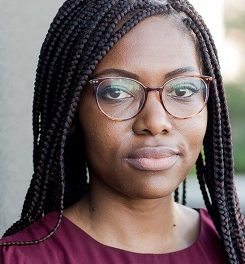
Bridging the digital gap
 During the 2015 Information Communication Technology Summit, the forever charismatic Minister of Information Communication Technology, Tjekero Tweya presented what is to be his ministry’s vision on connecting every individual and affording them the chance to participate in the global economy. His promise, ‘connect every town and help bridge the digital gap!’
During the 2015 Information Communication Technology Summit, the forever charismatic Minister of Information Communication Technology, Tjekero Tweya presented what is to be his ministry’s vision on connecting every individual and affording them the chance to participate in the global economy. His promise, ‘connect every town and help bridge the digital gap!’
Improving peoples lives in the workplace, in their homes and in their communities needs creative ways and means in using technology that give citizens a greater voice. Tweya’s presentation included a picture of Ovahimba village kids starring with awe and laughter at an I-pad.
But I could not help but feel that technology will continue to benefit those already privileged in my mind.
Unless organisations like MyDigitalBridge, a local non-profit, whom our President is a patron, has successfully connected a cluster of schools and marginalised communities through towers connecting rural communities to an existing and fixed Telecom network. The technology used allows for a internet free connection using the same signals that is used to send analogue television signals.
The intention is to provide a blueprint of broadband internet connectivity countrywide. Called ‘Citizen Connect’, the pilot consists of a network deployed over 9,424 km² area covering three regional councils: Oshana, Ohangwena and Omusati, and connecting 28 schools in northern Namibia. This makes it the biggest project of its kind in terms of area coverage.
To me this looks like a feasible solution in bringing teaching and education into the 21st century and creating a smart liveable city. Gone are the days of the black board and parrot-rote learning. By enriching the lives of marginalised communities through equal access to technology by easing and applying appropriate private public sector initiatives to reach universal access and service.
Because of such a technology, the internet of things, as defined by Wikipedia, as the ability to connect a network of physical objects with electronics, software, sensors, and network connectivity, which enables these objects to collect and exchange data.
An application to our specific environment would make it possible to live in a smart connected city where almost every municipal service is afforded to you as long as you have a smart phone. Even SMS cell phone based technologies are possible.
For instance a municipal bus tracker, right there in the palm of your hands you can see real time information as a bus moves around the city from bus-stop to bus-stop and whether it is going to your preferred destination and time of arrival.
Surely, Windhoek is a microcosm to test out these technologies to solve an inefficiencies such as our pain in the ass public transport system.
Imagining the possibility of the internet of things and how efficiency can rid us of those too well known questions.
First things first, how does the every day citizen become digitally literate? How do we harness the power of the web and the vast opportunities beyond social media?
Not to downplay social media, but surely it is useless to roll out a broadband connection to every nook and cranny if we don’t use our tailor made social networks to co-create and collaborate.
At the same ICT summit, First Lady of Namibia, basically said that the days of systematic corruption are numbered. She sang praise to a technology enabled future of an automated public procurement system.
Tweya might have also hinted in his presentation to how Monica Geingos’ E-bank model and how cell phone banking could put a number on informal economies contribution to Gross Domestic Product.











































